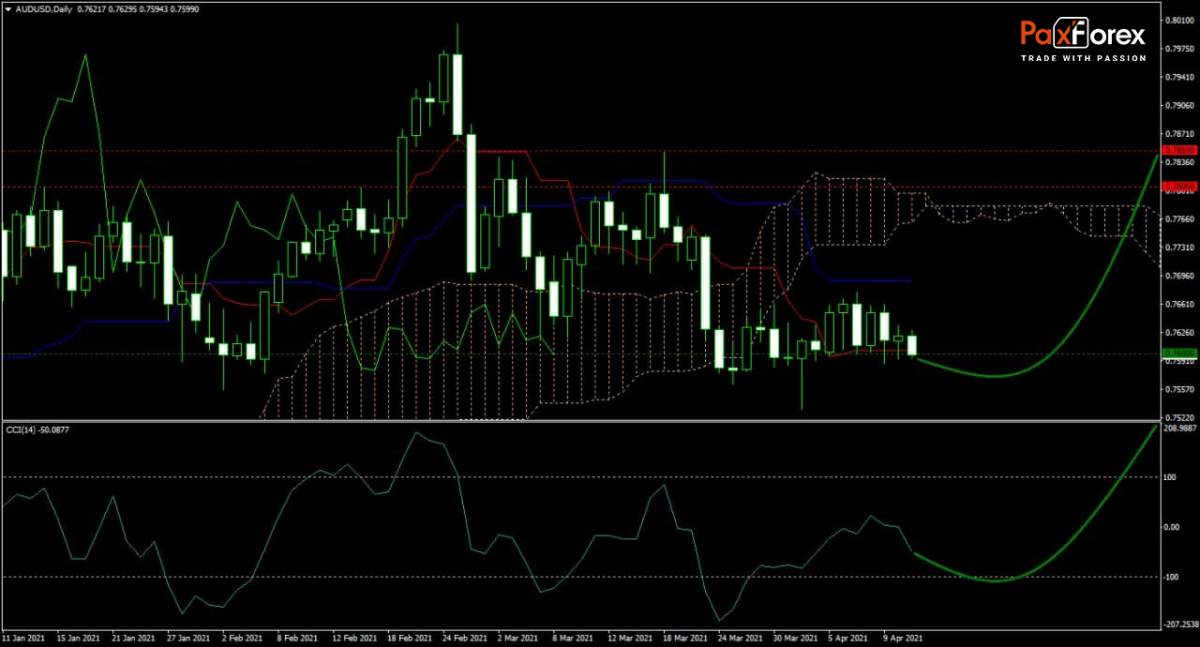The US CPI for March is predicted to increase by 0.5% monthly and by 2.5% annualized. Forex traders can compare this to the US CPI for February, which increased by 0.4% monthly and by 1.7% annualized. The US Core CPI for March is predicted to increase by 0.2% monthly and by 1.5% annualized. Forex traders can compare this to the US Core CPI for February, which increased by 0.1% monthly and by 1.3% annualized. US Real Earnings for March are predicted to increase by 0.1% monthly. Forex traders can compare this to US Real Earnings for February, which decreased by 1.0% monthly.
The forecast for the AUD/USD turned moderately bullish as the Covid-19 situation in the US is approaching the peak of the 2020 summer. Complacency and misplaced vaccine hope resulted in a surge in hospitalizations. The Tenkan-sen and the Kijun-sen flatlined, confirming deflating bearishness, while the Ichimoku Kinko Hyo Cloud extends its drift lower. Traders should expect a rise in volatility before this currency pair can attempt a reversal. The CCI moved out of extreme oversold territory but could dip lower one more time. A higher low will provide another buy signal.

Should price action for the AUD/USD remain inside the or breakout above the 0.7565 to 0.7630 zone, the following trade set-up is recommended:
- Timeframe: D1
- Recommendation: Long Position
- Entry Level: Long Position @ 0.7600
- Take Profit Zone: 0.7805 – 0.7850
- Stop Loss Level: 0.7530
Should price action for the AUD/USD breakdown below 0.7565, the following trade set-up is recommended:
- Timeframe: D1
- Recommendation: Short Position
- Entry Level: Short Position @ 0.7530
- Take Profit Zone: 0.7400 – 0.7460
- Stop Loss Level: 0.7565
ExxonMobil | Fundamental Analysis
EUR/JPY | Euro to Japanese Yen Trading Analysis
Recent articles

EUR/JPY | Euro to Japanese Yen Trading Analysis
